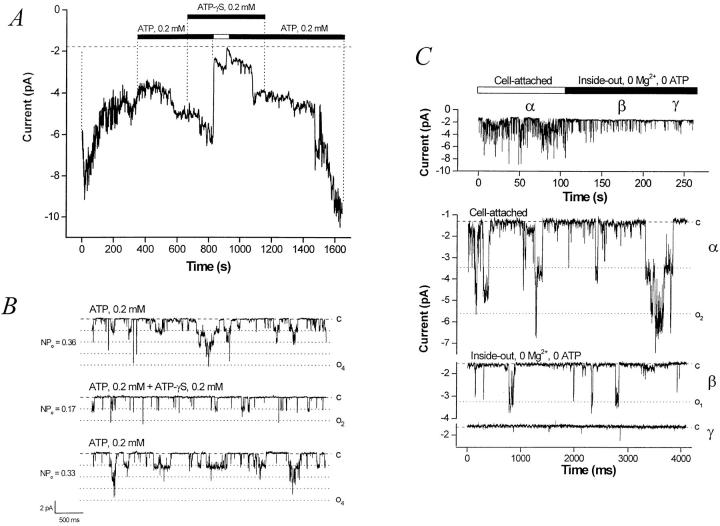Figure 9.
ATP but not ATP-γS prevents and rescues channel rundown. Hydrolyzable nucleoside triphosphates prevent and rescue BLM K+ channel rundown. A running average (current versus time, window width 768 ms) of a representative experiment is shown. The pipette is KCl (solution d), the bath is NaCl (solution c), the command potential is −60 mV. Upon excision in a nucleotide-free bath, channel activity decreases (channel rundown). After the addition of 0.2 mM ATP to the bath, channel activity slowly recovers. The addition of 0.2 mM ATP-γS (a poorly hydrolyzable ATP analogue) in the continued presence of 0.2 mM ATP has no effect. However, when ATP is removed, ATP-γS is not able to support channel activity, which rapidly declines and runs down. Readdition of ATP leads to full recovery of channel activity. Single-channel traces showing that ATP-γS has an inhibitory effect on KATP channel activity in excised inside-out BLM patches. When compared with control conditions (top), the addition of ATP-γS (middle) reduces nP o. This inhibition is reversible as long as the exposure to ATP-γS is not prolonged (bottom). (C) Removal of Mg2+ does not prevent channel rundown in an ATP-free bath. The top panel shows that rundown of the BLM KATP channel upon excision into an ATP-free bath proceeds despite removal of bath Mg2+. Representative traces from the regions marked by α, β, and γ are shown at bottom.

